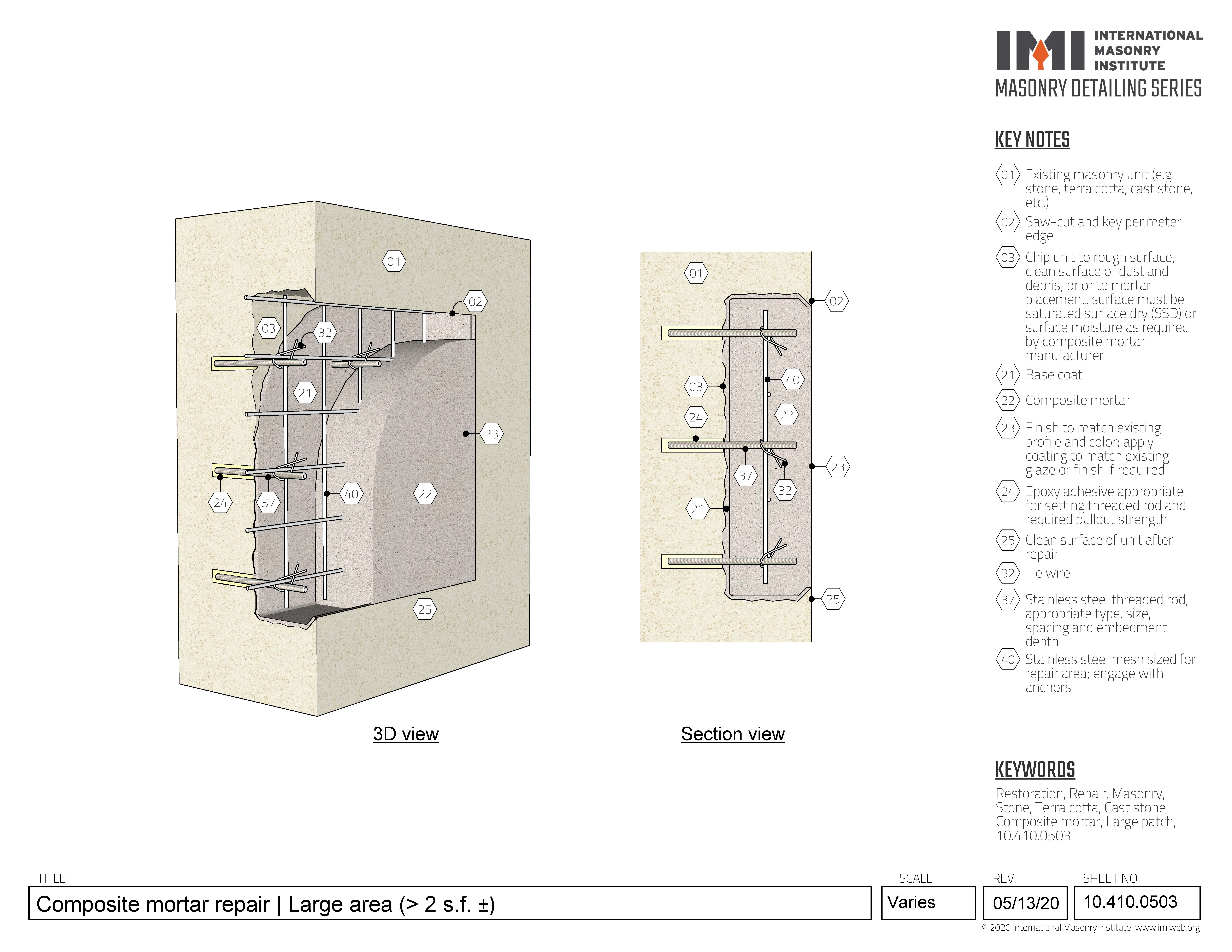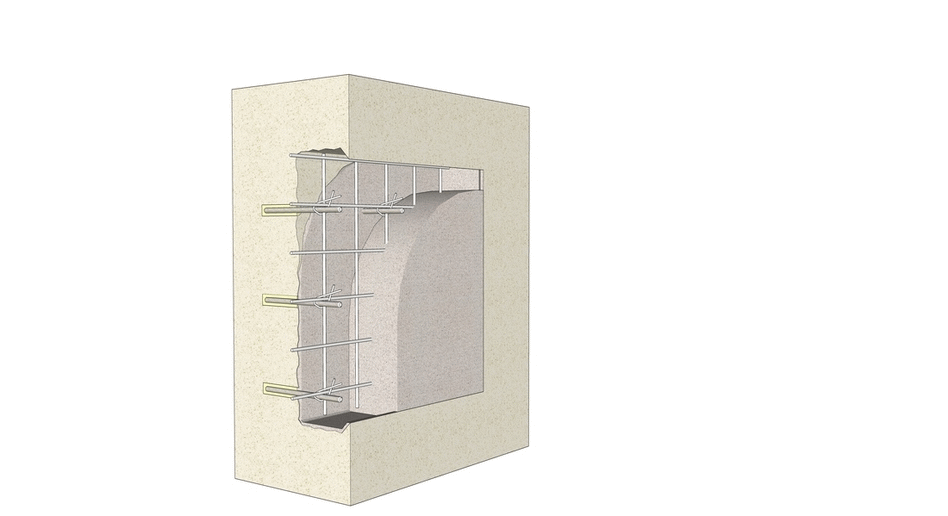This detail illustrates a composite mortar repair installed in an existing masonry unit (e.g. stone, terra cotta, cast stone, etc.) where a previous spall, multiple-cracks, or delamination existed. Composite mortar repairs are cementitious materials and fine aggregates (e.g. sand) blended with water. For composite mortar repairs to be durable and resilient it is important to take into consideration the following:
- Material properties of the repair mortar should match the original masonry unit receiving the repair, including strength, porosity/density, water absorption, and vapor permeability.
- Preparation of the repair area should include keyed perimeter edges, uniform depth, surface roughness, clean, and stainless steel supplemental anchorage.
- Installation of the composite mortar should include surface moisture content as required, base coat, initial and finish coats, finishing to match profile, and curing as required.
- Quality control should include repair mockups prior to start of work, observations during the project of repair area preparation, final visual observation for cracking, and sounding the repair with a mallet to confirm bond and soundness.
The detail shown is for a large repair area generally defined by its size a repair greater than 2 square feet and thicker than 2 inches in depth. Size and specific details to be determined by the design professional.


